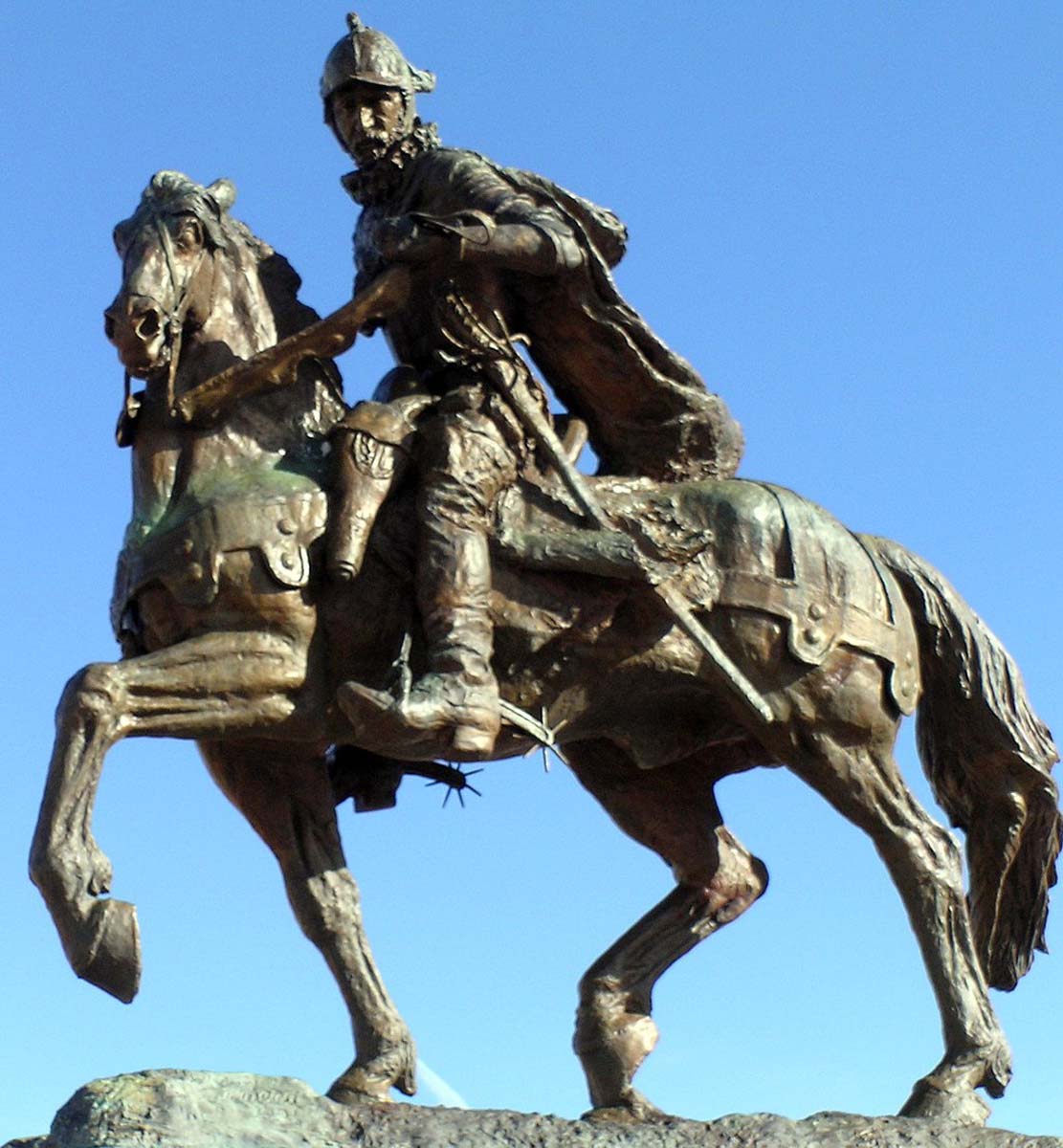The statue of Juan de Onate was erected at the Rio Arriba County Complex on September 28 after an absence from its former position at the Northern Rio Grande National Heritage Center in Alcalde, New Mexico.
Initially constructed in 1994, the statue was defaced in 1997 — its right foot was cut off as a symbolic remembrance of the Acoma Massacre of 1599. The foot was recast in bronze but was defaced again in 2017 with red paint that read, “remember 1680,” in reference to the Pueblo Revolt of that year.
The statue was removed entirely in June of 2020 amidst the Black Lives Matter protests that swept the nation.
The controversy around the statue seems to revolve around the question of whether we should be celebrating Juan de Onate. I think that premise of celebration misses the point of the broader issue. Whether or not we should be celebrating the historical figure is irrelevant — the point is that he is a historical figure. Juan de Onate was a provincial governor of present-day New Mexico under New Spain and held influence over Spaniards as well as indigenous Americans and played a role in the expansion of the Spanish Empire in North America. Like it or not, Juan de Onate is a part of the history of New Mexico.
Does a statue of Juan de Onate “celebrate” him? I do not think so, it simply recognizes his place in history. At best, the statue is an opportunity to start a conversation about the man and his legacy to this region of the world. Removing the statue does not remove the person from history and I believe all elements of human history are to be recognized and remembered (the good and the bad). I also believe that we should distinguish morality (subjective) from historical importance (objective). Being an important historical figure does not necessarily mean that the figure was “moral,” no matter what parameters for morality we are using. Respecting the history around a historical figure is certainly not an endorsement of the ethics or morality that governed the person’s character when he was alive.
Academia is not just for classrooms, it exists to promote a culture of intellectualism between every citizen. This requires us to face the uncomfortable facts of human history head on and be courageous in our discourse over such subjects. This can be difficult because facing the uncomfortable facts of human history necessitates facing the uncomfortable realities of human nature; it means recognizing the humanity in the worst among us. However uncomfortable this may be, any psychologist worth his salt will tell you that the first step to solving a problem is to recognize there is one. What could be a more direct way to confront the worst impulses of human nature than to construct a statue of a man who embraced his more violent nature?
I think modern humans could use a little perspective regarding how violent human history actually is. If you were born after World War II, then you have lived in an incredible time of peace and material prosperity previously unknown to humans of past centuries (a peace that may be coming to an end soon, but that is another discussion). Twenty-first century humans in particular seem to take peace for granted. In reality, peace is not the default state of humanity — it takes a level of cooperation that has rarely been achieved in our history.
I am not in favor of tearing down statues. I will always be in favor of erecting more statues. How about we construct a statue of the man who led the Pueblo Revolt, Po’Pay, right next to the statue of Juan de Onate? I think that would be a wonderful conversation starter for the general public.




